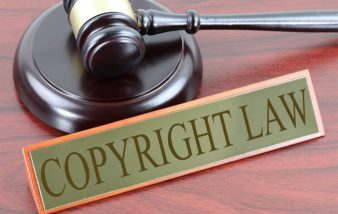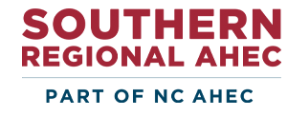COPYRIGHT GUIDELINES FOR NC AHEC EDUCATIONAL PRESENTATIONS
The following copyright considerations and requirements apply to educational activities provided for non‐profit educational institutions. It is the speaker/instructor’s responsibility to obtain appropriate permissions, licenses, or approvals required for any copyrighted graphic, text, or video used in a presentation conducted for Southern Regional AHEC.
What is Copyright?
“Copyright” literally means the right to copy but has come
to mean that body of exclusive rights granted by law to copyright owners for
protection of their work, to control how their work is published and reused.
What is Protected by Copyright?
- Journal articles (including tables & charts) & Books
- Websites
- Drawings, Photographs, Maps, & Graphic Design
- Movies, Videos, & Music
- TV & Radio Broadcasts
Where to Find Public Domain or Creative Commons License Images?
Always read the Terms of Use or the User License Agreement prior to using images and include attribution with the image (or on a labeled list of references at the end of the presentation). Works in public domain are not protected by copyright and can be used freely without the creator’s permission. Creative Commons licenses allows creators to prospectively grant permission for some uses while retaining copyright protection over other uses.
- Creative Commons
- Pixabay
- Public Health Image Library (PHIL)
- Unsplash
- If using Google Images, select Tools, Usage Rights, and Creative Commons licenses.
- If using Bing Images, select Filter, License, and All Creative Commons.
What about Charts and Graphs from Journal Articles or Books?
- Factual information is not protected by copyright. The presentation of factual information is protected by copyright.
- Reuse of a chart or graph is generally a copyright violation. Recreation of a chart or graph into a different layout or design is generally not a copyright violation. Always cite the source of the data.
Attachment examples of how to add a graph according to copyright guidelines.
What about Fair Use?
“Fair use” allows limited portions of copyright‐protected works to be used in certain circumstances. Examples are:
- Criticism or Comment
- News Reporting
- Face‐to‐Face Teaching Activities
- Scholarship & Research
Four Factors to Consider When Determining If Fair Use Applies
- Purpose & character of the use, including whether the use is of a commercial nature or is for nonprofit educational purposes
- Nature of the work (factual or creative, published, or unpublished)
- Amount of the work being used or whether the portion used represents the heart of the work
- Effect on the market or on the work’s value “Fair Use” does not cover all possible educational uses or situations. There are stricter standards for material posted on a webpage (such as handouts) or recorded/enduring material (webinars or online courses).
For more information on “Fair Use”, click here.
Rules of Thumb to Remember
- Assume all images and texts are copyrighted.
- Do not assume Fair Use applies even if you have been covered by Fair Use when teaching the same topic in other circumstances.
- Best practice is to hyperlink to videos or articles rather than provide a copy. Permission must be obtained to copy or distribute the work to more than one person.
- The source of content must be cited – either on the slides, or in the notes, or on a reference slide at the end of the presentation. Include author, title, journal title or website, and year of publication.
- The citation for copies copyrighted content, including images, charts, and photographs, should include a copyright statement, for example: “used by permission,” or “public domain,” or the correct Creative Commons acronym.
- Statutory fines for copyright violations can range from $750 to $150,000 per infraction or per audience member.

Youngson N. Copyright Law. Alpha Stock Images/The BlueDiamond Gallery. https://thebluediamondgallery.com/legal/copyright-law.html.
Accessed October 22, 2021. CC BY-SA 3.0
Author(s). Title. Website or Publisher. URL. Publication date. Updated date. Accessed date. Copyright statement

